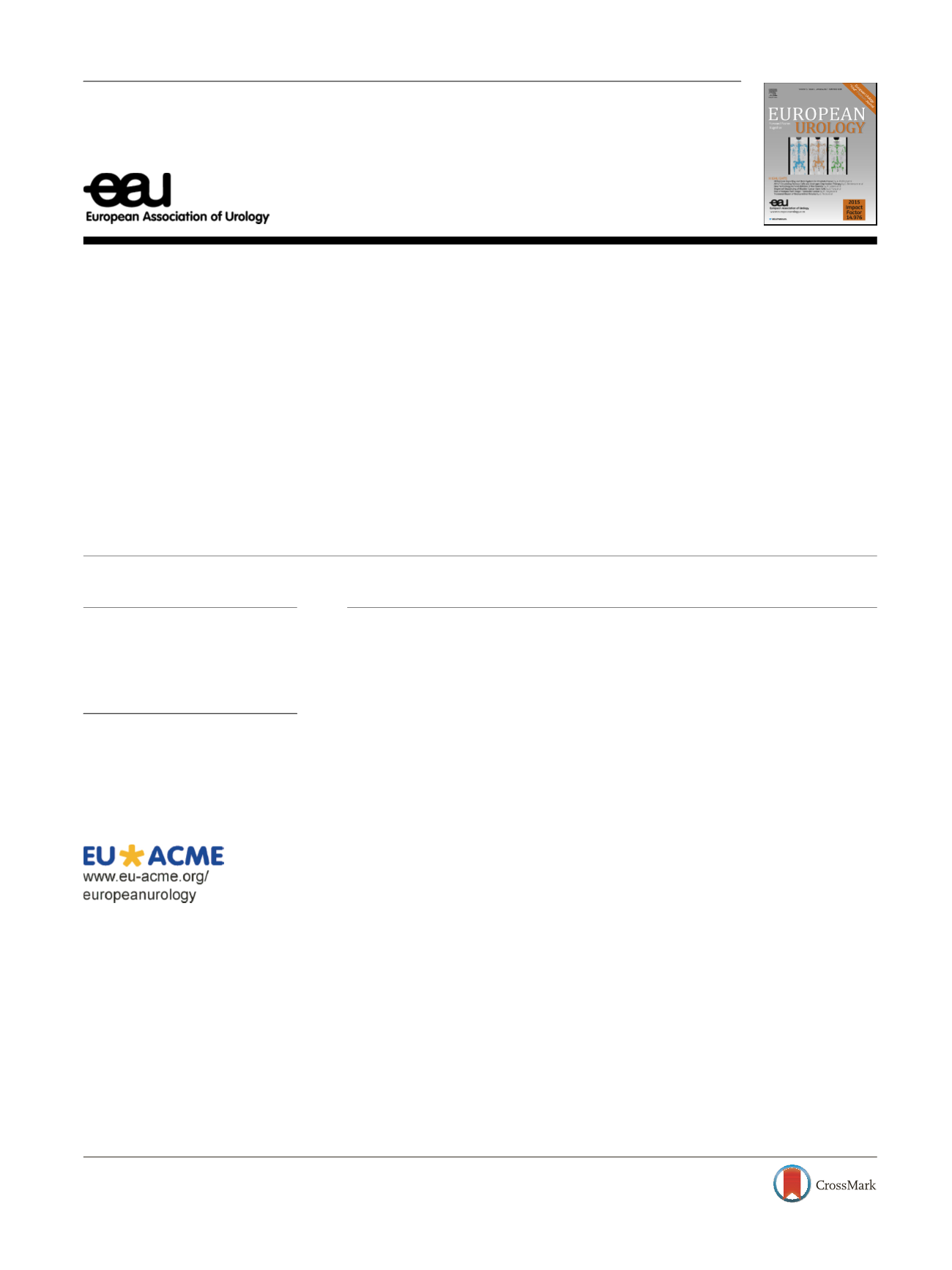

Platinum Priority – Prostate Cancer
Editorial by Alberto Bossi and Cesare Cozzarini on pp. 710–711 of this issue
Adjuvant and Salvage Radiotherapy after Radical Prostatectomy
in Prostate Cancer Patients
Giorgio Gandaglia
a , * ,Alberto Briganti
a ,Noel Clarke
b ,R. Jeffrey Karnes
c ,Markus Graefen
d ,Piet Ost
e ,Anthony Laurence Zietman
f ,Mack Roach II
I ga
Unit of Urology/Department of Oncology, URI, IRCCS San Raffaele Hospital, Milan, Italy;
b
Department of Urology, The Christie and Salford Royal NHS
Foundation Trusts, Manchester, UK;
c
Department of Urology, Mayo Clinic, Rochester, MN, USA;
d
Martini-Clinic, Prostate Cancer Center, University Medical
Center Hamburg-Eppendorf, Hamburg, Germany;
e
Department of Radiation Oncology and Experimental Cancer Research, Ghent University Hospital, Ghent,
Belgium;
f
Massachusetts General Hospital, Boston, MA, USA;
g
Department of Radiation Oncology, University of California at San Francisco, San Francisco,
CA, USA
E U R O P E A N U R O L O G Y 7 2 ( 2 0 1 7 ) 6 8 9 – 7 0 9ava ilable at
www.sciencedirect.comjournal homepage:
www.eu ropeanurology.comArticle info
Article history:
Accepted January 20, 2017
Associate Editor:
James Catto
Keywords:
Prostate cancer
Radiotherapy
Salvage radiotherapy
Adjuvant radiotherapy
Radical prostatectomy
Please visit
www.eu-acme.org/ europeanurologyto read and
answer questions on-line.
The EU-ACME credits will
then be attributed
automatically.
Abstract
Context:
Prostate cancer (PCa) patients found to have adverse pathologic features
following radical prostatectomy (RP) are less likely to be cured with surgery alone.
Objective:
To analyze the role of postoperative radiotherapy (RT) in patients with
aggressive PCa.
Evidence acquisition:
We performed a systematic literature review of the Medline and
EMBASE databases. The search strategy included the terms radical prostatectomy,
adjuvant radiotherapy, and salvage radiotherapy, alone or in combination. We limited
our search to studies published between January 2009 and August 2016.
Evidence synthesis:
Three randomized trials demonstrated that immediate RT after RP
reduces the risk of recurrence in patients with aggressive PCa. However, immediate
postoperative RT is associated with an increased risk of acute and late side effects
ranging from 15% to 35% and 2% to 8%, respectively. Retrospective studies support the
oncologic efficacy of initial observation followed by salvage RT administered at the first
sign of recurrence; however, the impact of this delay on long-term control remains
uncertain. Hopefully, ongoing randomized trials will shed light on the role of adjuvant
RT versus observation salvage RT in individuals with adverse features at RP. Accurate
patient selection based on clinical characteristics and molecular profile is crucial. Dose
escalation, whole-pelvis RT, novel techniques, and the use of hormonal therapy might
improve the outcomes of postoperative RT.
Conclusions:
Immediate RT reduces the risk of recurrence after RP in patients with
aggressive disease. However, this approach is associated with an increase in the
incidence of short- and long-term side effects. Observation followed by salvage RT
administered at the first sign of recurrence might be associated with durable cancer
control, but prospective randomized comparison with adjuvant RT is still awaited. Dose
escalation, refinements in the technique, and the concomitant use of hormonal therapies
might improve outcomes of patients undergoing postoperative RT.
Patient summary:
Postoperative radiotherapy has an impact on oncologic outcomes in
patients with aggressive disease characteristics. Salvage radiotherapy administered at
the first sign of recurrence might be associated with durable cancer control in selected
patients but might compromise cure in others.
#
2017 European Association of Urology. Published by Elsevier B.V. All rights reserved.
* Corresponding author. Unit of Urology/Division of Oncology, URI, IRCCS Ospedale San Raffaele, ia
Olgettina, 58, Milan 20132, Italy. Tel. +39 226437286; Fax: +39 226437286.
E-mail address:
giorgio.gandaglia@gmail.com(G. Gandaglia).
http://dx.doi.org/10.1016/j.eururo.2017.01.0390302-2838/
#
2017 European Association of Urology. Published by Elsevier B.V. All rights reserved.
















